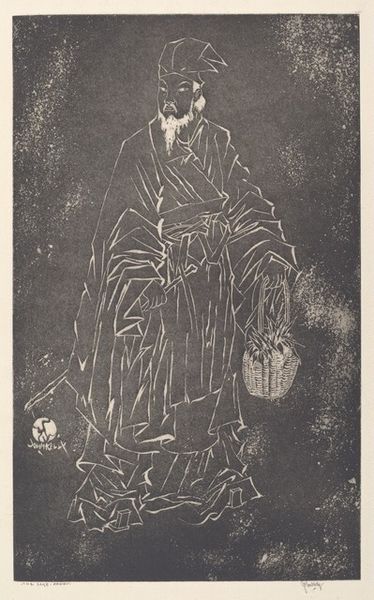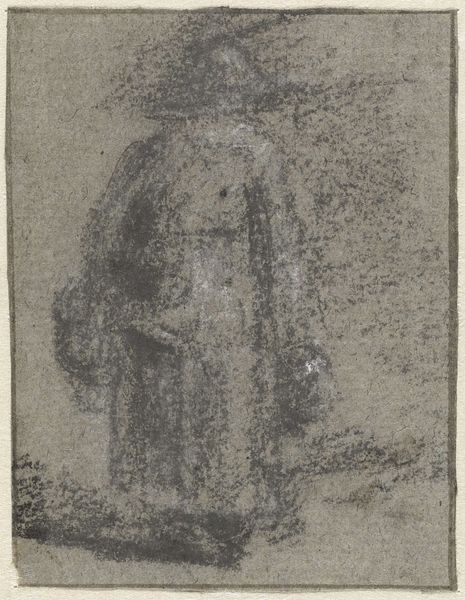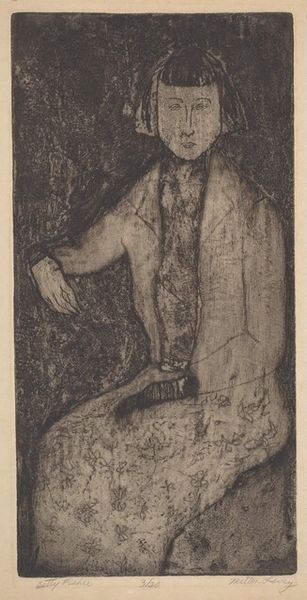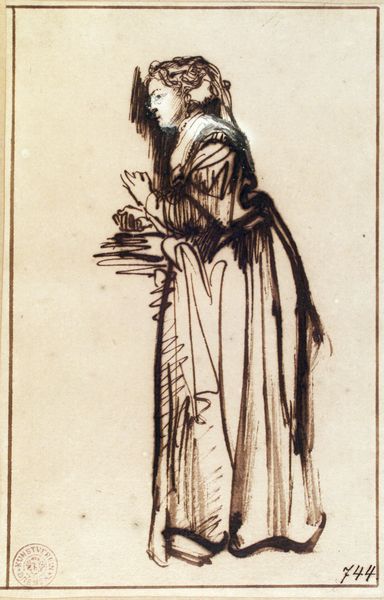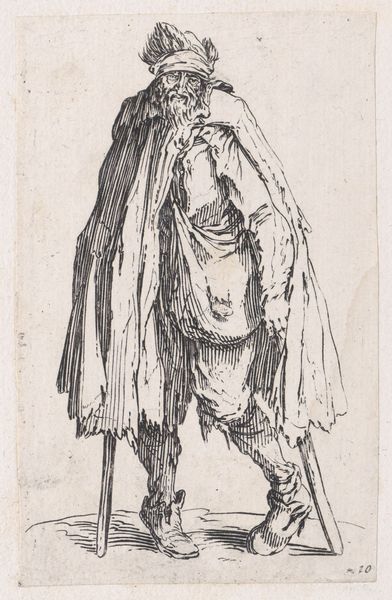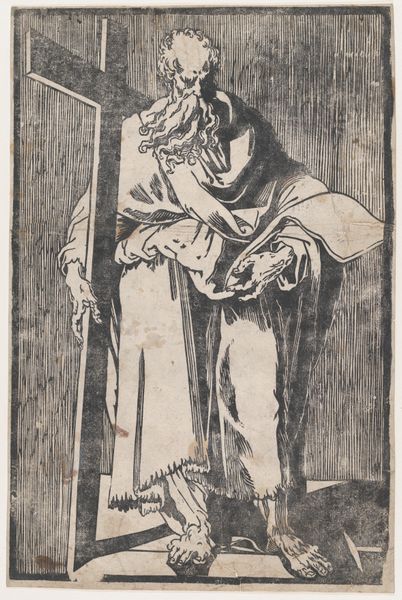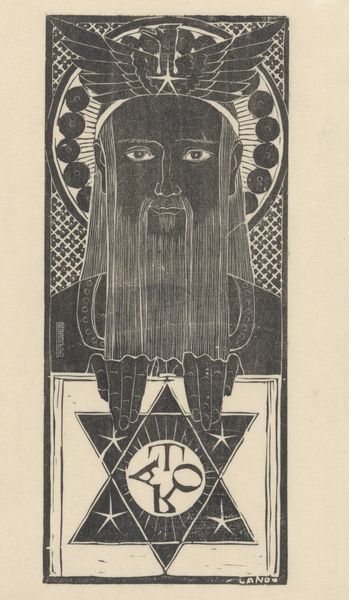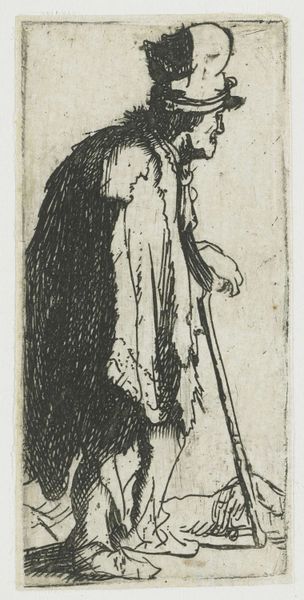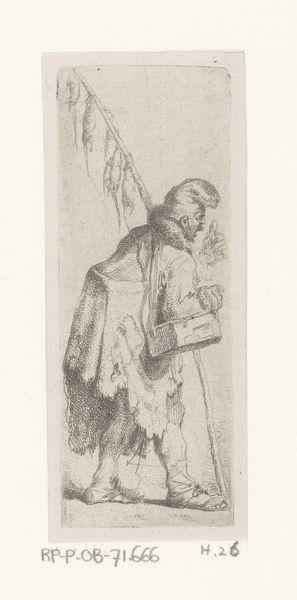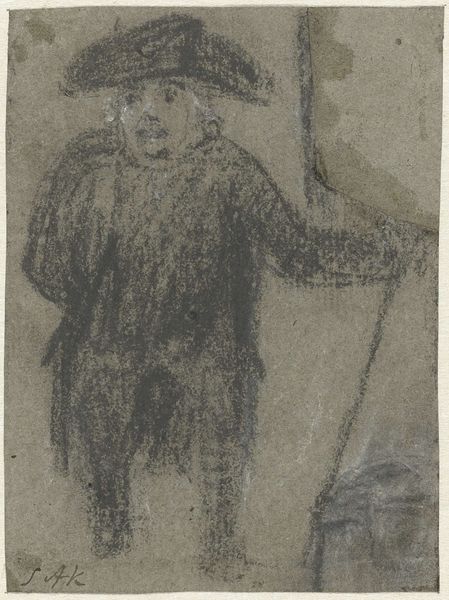
Dimensions: height 184 mm, width 138 mm
Copyright: Rijks Museum: Open Domain
Curator: Here we have Martin Monnickendam's pencil drawing, "Dienstmeisje," created sometime between 1884 and 1931. Editor: It's remarkably moody, isn't it? The dark pencil strokes against the paper create a heavy, almost somber atmosphere. It also feels very immediate, like a quickly captured impression. Curator: Precisely. The work employs a fairly muted palette of dark shades, and Monnickendam really hones in on texture and form with just the pencil. See how the white of the apron creates dynamic contrasts with the dark patterned dress and even darker background. Editor: I am struck by the way the maid’s figure seems to emerge from a very dark interior. This evokes, for me, the role of women working in the shadows during this time in history—largely unacknowledged labor. Do we know where this was made, or exhibited originally? Curator: Unfortunately, the historical record is unclear on both location and initial reception. However, we can see that the artist pays acute attention to the maid’s clothing: the delicate lace collar, the ribbons, which suggests perhaps a level of personal engagement that transcends mere documentation. Editor: That may be. I also think of it in relation to other artistic portrayals of domestic workers, and how this one maybe humanizes this woman differently through these particular aesthetic choices. Also, there's almost an unfinished quality about it. Was this a preliminary sketch, perhaps? Curator: It’s plausible. This aesthetic actually lends to the work an emotional honesty—we as viewers are offered something more genuine, rather than staged or refined. Monnickendam highlights a sense of movement and impermanence with the unfinished background—allowing us a look at the pure structure. Editor: Right. That raw, honest approach certainly makes you consider the lived reality of the subject. I wonder what she felt. Curator: The drawing successfully gives us not only the visible forms, but something of her presence. Editor: I think this piece raises many questions, about visibility, labor, and the art of portraiture. The sketch reminds us that representation itself is always a constructed act.
Comments
No comments
Be the first to comment and join the conversation on the ultimate creative platform.


